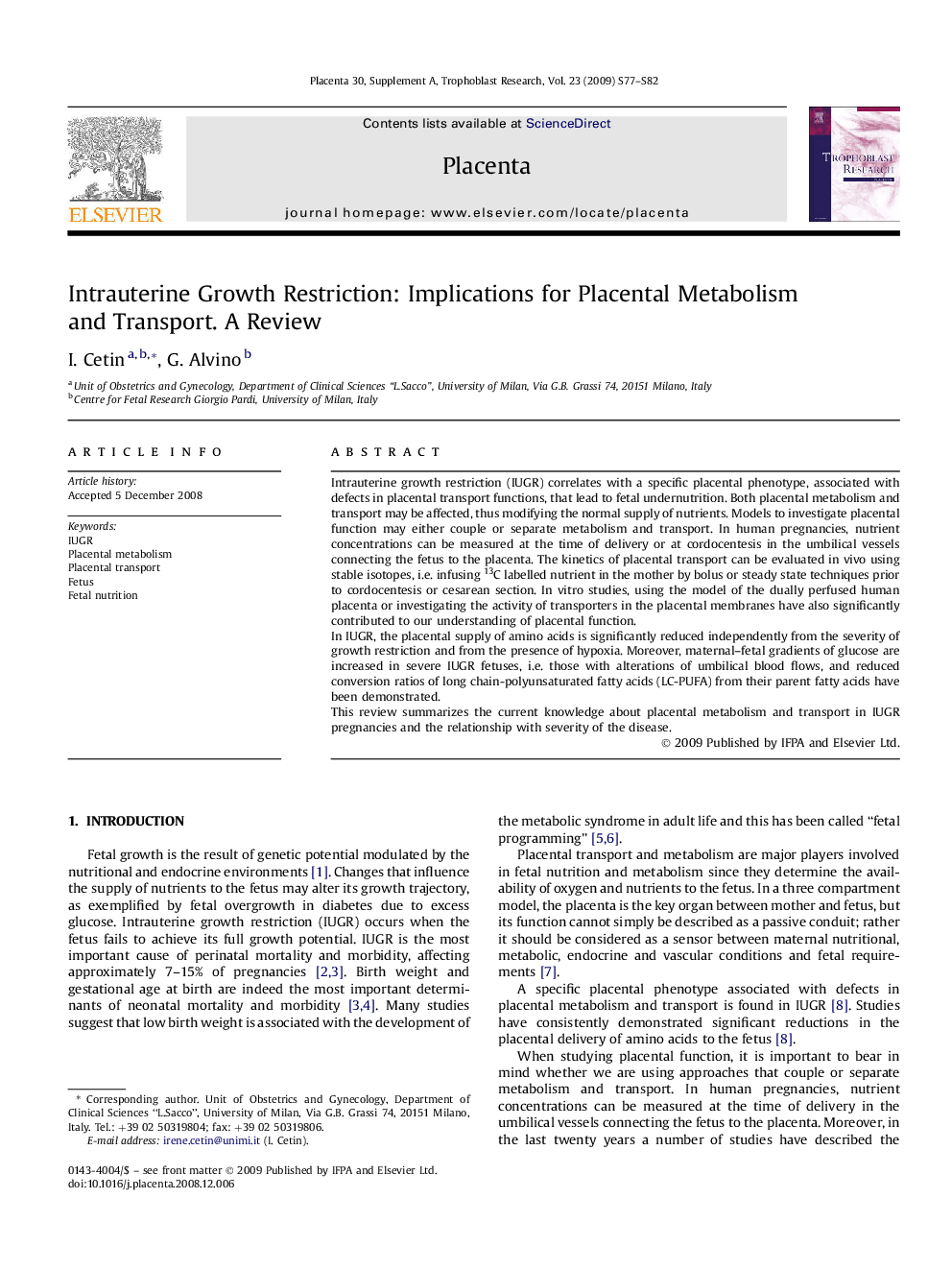| Article ID | Journal | Published Year | Pages | File Type |
|---|---|---|---|---|
| 5896102 | Placenta | 2009 | 6 Pages |
Intrauterine growth restriction (IUGR) correlates with a specific placental phenotype, associated with defects in placental transport functions, that lead to fetal undernutrition. Both placental metabolism and transport may be affected, thus modifying the normal supply of nutrients. Models to investigate placental function may either couple or separate metabolism and transport. In human pregnancies, nutrient concentrations can be measured at the time of delivery or at cordocentesis in the umbilical vessels connecting the fetus to the placenta. The kinetics of placental transport can be evaluated in vivo using stable isotopes, i.e. infusing 13C labelled nutrient in the mother by bolus or steady state techniques prior to cordocentesis or cesarean section. In vitro studies, using the model of the dually perfused human placenta or investigating the activity of transporters in the placental membranes have also significantly contributed to our understanding of placental function.In IUGR, the placental supply of amino acids is significantly reduced independently from the severity of growth restriction and from the presence of hypoxia. Moreover, maternal-fetal gradients of glucose are increased in severe IUGR fetuses, i.e. those with alterations of umbilical blood flows, and reduced conversion ratios of long chain-polyunsaturated fatty acids (LC-PUFA) from their parent fatty acids have been demonstrated.This review summarizes the current knowledge about placental metabolism and transport in IUGR pregnancies and the relationship with severity of the disease.
